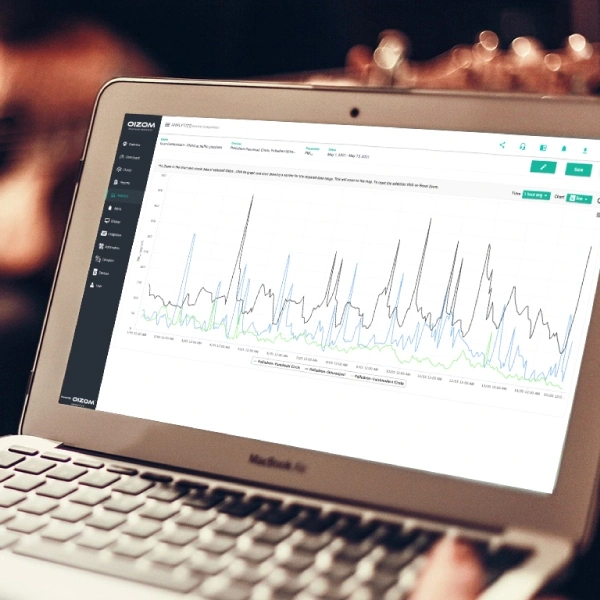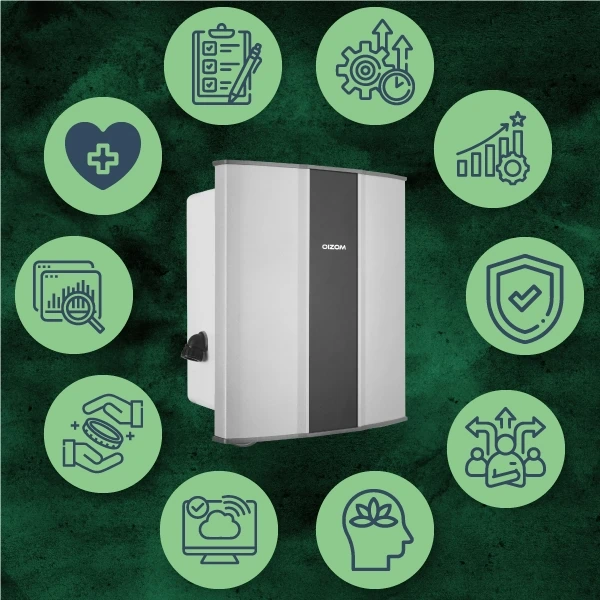Air pollution is on the rise, and it is not just the governments that want to do something about it. Local organizations and industrialists are also asking for data to understand what is responsible for the damage of the air around them. Pollutant dispersion causes subtle yet fatal side effects on public health. Therefore, it becomes essential to understand their concentration levels and what they indicate. Ambient air quality monitoring systems measure different air pollutants like CO2, CO, NOx, SOx, O3, PM2.5 and, PM10, using sensors that help develop strategies to combat air pollution. But the accuracy of low-cost air quality monitoring systems is a primary requirement for effective mitigation.
Why is there so much hype around these devices?
Deployment of cost-effective air quality monitoring systems can be a scalable solution to monitor the local air quality. Sensor-based air quality monitoring systems allow people to operate their devices remotely using wireless network protocols. It is also easy to retrieve data from the devices. These devices have become the popular choice because of three main factors, namely:
1. Affordability 2. Scalability 3. Compact size
Manual devices are challenging to work with and require a specific skill set that only trained persons have. The latest third-generation monitors, i.e., low-cost sensor-based systems, are a lot easier to operate. They do not require frequent visits to the field once installed. They can provide easily interpretable data as and when needed. As a result, it gives access to real-time air pollutant concentration information. These devices are compact and helpful in developing air pollution mitigation strategies explicitly based on the local conditions.
But, remarks like these devices are too good to be true, are afloat. Discussions regarding concerns about the effectiveness of air quality monitoring sensors must take place. To determine the accuracy of low-cost air quality monitoring systems, one should seek answers to questions like “Does low cost mean low quality?”
Another critical question is “How do we know if the data collected is precise?”.
What are the frequently encountered concerns regarding the accuracy of a low-cost air quality monitoring system?
The primary concern amongst users is the accuracy and precision of these systems. Their question is, if they are low-cost and automatic, are they able to differentiate between pollutants of a similar size range? How effectively do these devices do the measurement if a cluster of pollutants shows identical characteristics? For example, PM2.5 particles in the presence of humidity can change the structure, and the device can read it as PM10 particles. To avoid this, we require precise systems that collect the sample considering weather conditions and compensate for their effect on the measurement. Which raises the following question: Is the quality compromised for the sake of affordability? Because precise data measurement requires extra effort.
Another question is about the precision of the location and the range of the area covered.
So, the overall concern is: Are manufacturers focusing on the accuracy of low-cost air quality monitoring systems to use technologies that provide precise monitoring data? Or are they solely trying to fit in the financial range to make sensors accessible and sacrifice quality?
Solution-based approach
Today, the application of low-cost systems that use sensor-based technology for sample collection and pollutant concentration measurement is on the rise. It is because of their ease of working and low maintenance. But with increased use, concerns related to accuracy need to be addressed. The most important one is about the quality and accuracy of these devices. Various calibration methods can be employed to dissolve human errors and improve the quality of the data collected.
Devices developed at Oizom provide three-level calibration to ensure the best results. The use of active sampling technology eliminates the effects of environmental factors. The technology allows Oizom’s systems to achieve up to 13% higher accuracy than the industry standards enabling us to offer insight into ambient air quality data. Oizom’s air quality monitoring equipment works on a patented ‘e-Breathing technology’ that makes our systems accurate and durable. Additionally, a heated inlet for particulate monitoring nullifies the effects of humidity on PM measurement.
Oizom uses GPS to pinpoint the exact locations of the deployment of their devices. The precise location ensures that holistic knowledge of the actual area covered. According to EPA, the Collocation of devices enables users to evaluate the sensors’ accuracy in their devices. It is the process of placing the device alongside a reference monitor simultaneously under real-world conditions. This exercise can help to determine their accuracy. Oizom devices can be collocated against reference stations for 1000+ data points to help you choose the quality of the sensors.
More than just accuracy – Oizom’s low-cost air quality monitoring systems
With over 500 installations in 40 countries, Oizom has offered data-driven solutions to users in fields such as smart city development, airport air quality monitoring, odour control at landfills, industrial hygiene, and much more via cost-effective ambient air quality monitoring systems. Our systems have provided actionable insights to authorities, companies, and industries using sensor-based hardware that monitors various environmental data like air quality, temperature, and humidity. And all of this is available at an affordable price proving that if intended, the accuracy of low-cost ambient air quality monitoring systems can be maintained and improved with time.






